It is cold. When I got up this morning it was – 20°F – 29°C.
The birds are all puffed up, obviously to insulate themselves against the intense wind and wind. With the wind chill it was about – 40°F.
The Pine Siskin I wrote of yesterday isn’t doing so well. He seems to be lame. He is not hopping properly… limping, rather. Though he isn’t at the perch constantly, as yesterday. We’ll see how this goes.
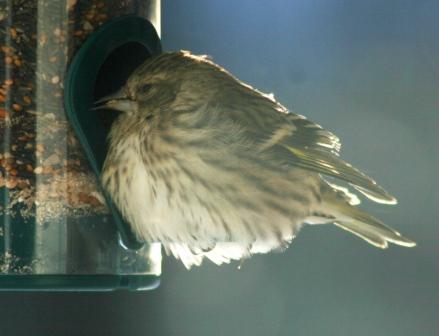
The Nuthatch is doing the puff ball thing too, of course.
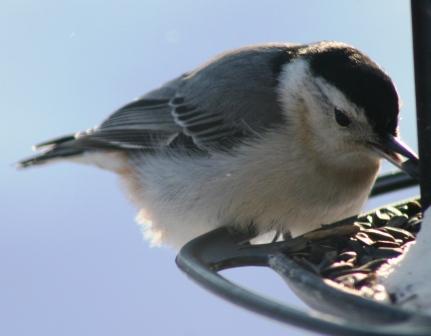
Chickadees as well.
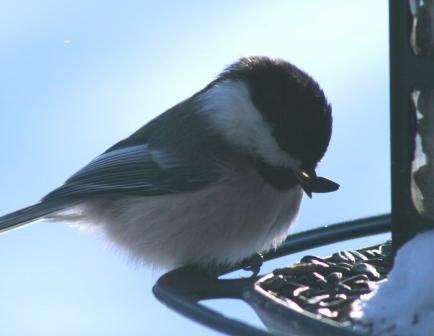
Triumph. In this case, life-saving.![]()
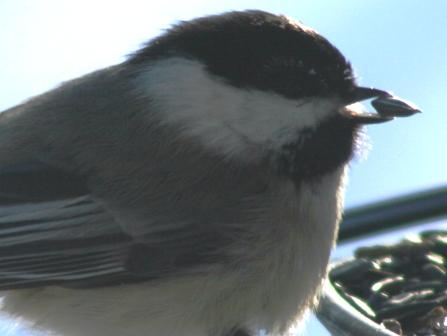
One of the American Goldfinch Eating Team.
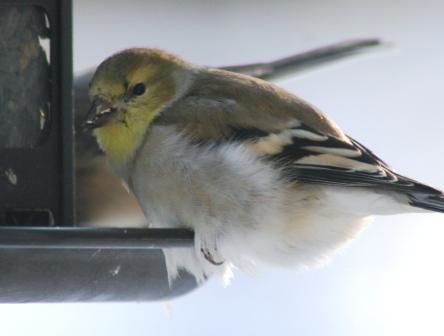
Chickadees, as do the others, constantly look for other food sources.
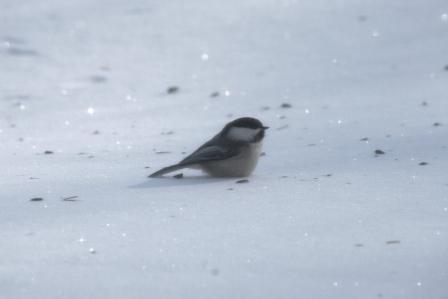
Waiting to zoom in for another snack.
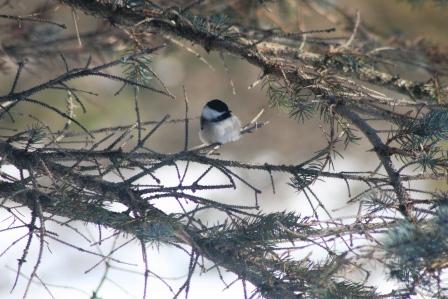
UPDATE: 20:27 GMT
He is still there.
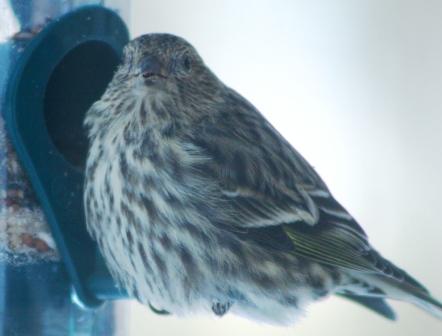


































That is bone chilling cold. I am surprised they didn’t migrate south for the winter. Sometimes we see more birds, or at least flocks, in the winter, with the regulars all year long.
Thats cold. We started out at 0 today here in STL. Hopefully the Pine siskin does better.
Save the Pine Siskin!
Poor Piney. Poor little Siskey. 8-(
I saw what looked like a cardinal today while shoveling. He was a little guy, bright red with the horn on top. Soft chirp.
In weather like you’re having, the poor little critters need all the calories they can get. Hard as it might be for a serious cook, you might want to pour your bacon grease over crumbs/seeds and set the resulting “cake” outside for the poor things to eat. (Using peanut butter also works, but I suspect you’re not a peanut butter kind of guy.)
Well, that seals the deal, Fr. Z. Your description of the bird’s lame hopping and moping should prove beyond a doubt (to us watching from afar) that the sorry little creature is ailing. On the last post about this bird I was holding out hope (read: overly optimistic) in my comments that he was just cold and lazy.
Sorry to doubt you, Michael!
The bird needs to be brought inside. A cardboard box, towel inside, water and warmth from a lightbulb or near a heat source.
It looks “down” enough to catch by throwing a towel over it.
Not trying to be a cold-hearted cat here…but what about expanding bird populations and the spread of avian influenza? It is my understanding that in the locale where I live (upper midwest), the large local collection of Canada geese and the people who frequent the park the geese have taken over are (voluntary for the people) being screened for avian influenza.
Canada: If you want peace, then keep your geese! (Yes..that was a JOKE that I recently heard and loved. Canadians who frequent this site need not take offense.)
You can buy heated bird baths for the water needs as well. That would really increase your visitations by the flying tennis balls, although it looks like the number of aves-tolic visitators are not an issue with you.
Thank you, Father, for the pictures of all the birds. I so delight in seeing God’s beautiful creation in them. It is amazing that they survive in those conditions. Here in sunny So. Cal., I can’t imagine those temps!
I don’t know whether you have nest boxes, Father, but they provide good shelter in severe conditions for as many as 30 small birds per box. Hard to believe, but that’s what the experts say. I’ve just looked at the z-cam and there seems to be a little bundle on the window sill? I’ve often wondered why birds don’t get frostbite in their little stick legs and feet.
There’s no tissue (with any significant water content) on their feet — nothing to freeze like our own tissues. Our appendages are water-soaked sponges in relation to our avian friends.
An interesting note from my bird supply store newsletter:
A 3-year study in Wisconsin concluded that when temperatures fall below 10 degrees, Black-capped Chickadees
without access to feeders have only a 37% survival rate as opposed to the much higher 69% survival rate for those
able to utilize feeders. [Full disclosure: this store sells bird feed :)] If chickadees are representative of our
other feeder birds, then your feeders can make a big difference in the number of birds that survive the winter. Also, birds may burn up to 10% of their body weight in stored fat each night to stay warm…and this fat must be replaced every day.
The bird is obviously depressed — that is why he is eating so much! Look at him!
A Random Friar
Thanks for the explanation and extra info